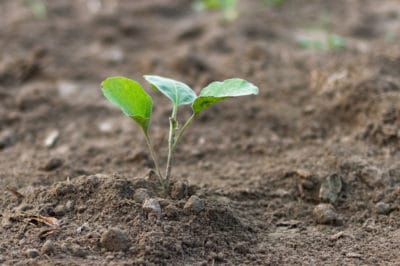Choose the Type of Eggplant
Grocery stores usually sell the oval-oblong shaped eggplant. There are many other varieties that can add interest to your garden and your table. Here are the four basic types of eggplant that you can grow:
- Oval-oblong shaped eggplant
- Japanese eggplant (long and slender)
- Small fruited eggplant (green, white, lavender, purple varieties)
- Novelty eggplant (orange Turkish, green Thai, egg-shaped white)
Spending cold winter months browsing seed catalogs will have you dreaming of this hot weather vegetable. Choose one or more varieties that best suit the length of your growing season.
Starting the Transplants
Start your eggplant transplants in clean pots containing quality seed starting mix eight to 10 weeks before transplanting time. Planting the seeds in peat pots means you can transplant the entire pot into the garden without disturbing the roots. Transplanting time is four to six weeks after the last frost. Soaking the seeds overnight may shorten the 10-14 day germination period.
Plant seeds 1/4 inch deep in a lightly packed, moistened soil mix. After sowing seeds, a spray bottle misting is the best method of watering. Warmth is also essential for proper germination (75-90 degrees = optimum temperature). A warming mat under growing trays could be beneficial. Keep your pots under fluorescent light for 14-16 hours every day. In warm growing zones, seed sown directly in outdoor soil warmer than 60 degrees.
Time for Planting Outdoors
Young eggplant seedlings need to be hardened-off by moving them outdoors on warm, sunny days above 55 degrees. The ideal growing temperature for eggplant is 70 degrees and they don’t perform well in cold conditions. Experienced gardeners know that when tomato plants are thriving outdoors, it is safe to plant eggplant. Plant the seedlings 24 inches apart in a well-drained, composted fertile soil. Water after planting and at least once each week and possibly more if conditions are hot and dry.
In cooler climates, planting eggplant in dark pots with a 14-inch or larger diameter could produce a more productive plant. Although the potted plants require more watering, the increased temperature of soil may prove beneficial.
